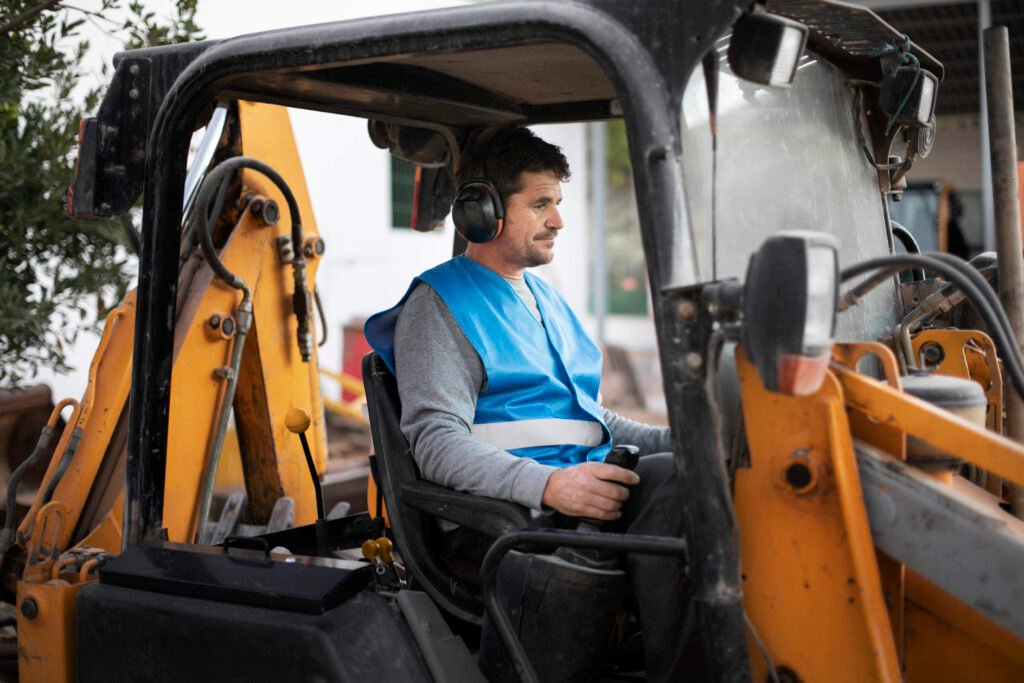When it comes to handling materials in challenging outdoor environments—construction sites, farms, lumberyards, or military operations—standard forklifts simply won’t do. Rough terrain forklifts are specifically engineered to operate efficiently on uneven ground, muddy paths, gravel, and even snow-covered surfaces. In this guide, we’ll explore how these machines work, what makes them different, and what factors to consider when using them in demanding environments.
What Are Rough Terrain Forklifts?
Rough terrain forklifts, also known as all-terrain forklifts, are heavy-duty lifting machines designed for outdoor use on unstable or rugged surfaces. Unlike traditional warehouse forklifts, these models feature reinforced frames, oversized pneumatic tires, and powerful engines that deliver greater torque and mobility.
Key Features of Rough Terrain Forklifts:
-
Large, treaded tires for better traction on dirt, gravel, and inclines.
-
High ground clearance to navigate over rocks, debris, and uneven surfaces.
-
Four-wheel drive (4WD) or all-wheel drive (AWD) for improved maneuverability.
-
Heavy-duty lifting capacities, often ranging from 5,000 to over 12,000 lbs.
Why Choose Rough Terrain Forklifts for Outdoor Applications?
Not all job sites are flat and predictable. Environments such as construction zones or logging sites demand a forklift that can operate safely and efficiently on uneven terrain.
Practical Benefits:
-
Enhanced Stability: Thanks to their low center of gravity and wide base.
-
Weather-Ready Performance: Built to function in rain, snow, or dusty conditions.
-
Durability: Designed with rugged frames and components for long-term use in harsh settings.
Example: On a large-scale construction site, a rough terrain forklift is used to unload pallets of bricks from delivery trucks, transporting them across loose gravel and up a slight incline—something a standard forklift couldn’t manage safely.
Popular Types of Rough Terrain Forklifts
Different jobs require different models. Here are three of the most commonly used types of rough terrain forklifts:
1. Vertical Mast Forklifts
The most recognizable type, equipped with vertical lifting mechanisms ideal for raising and stacking materials on construction sites.
2. Telehandlers (Telescopic Handlers)
Feature a boom arm instead of a mast, allowing them to reach over obstacles or lift loads to higher elevations. Common in agriculture and industrial maintenance.
3. Truck-Mounted Forklifts
Compact models that attach to delivery trucks, useful for unloading materials in remote or off-road locations.
Choosing the Right Forklift for Outdoor Work
Before investing in or renting a rough terrain forklift, it’s essential to match the equipment with your operational needs.
Consider the Following:
-
Terrain Type: Will it be rocky, muddy, sloped, or frozen?
-
Lifting Height: Do you need to reach second-floor platforms or rooftops?
-
Load Capacity: Are you transporting light crates or dense building materials?
-
Fuel Type: Diesel engines are common, but electric models are emerging for eco-conscious operations.
Case Example: A forestry company operating in a mountainous region uses a telehandler rough terrain forklift to lift logs onto trailers. The vehicle’s stability on slopes and strong lifting power reduces downtime and improves safety.
Trends in Rough Terrain Forklift Technology
As with most heavy equipment, the industry is evolving to meet growing safety and sustainability demands.
Emerging Trends:
-
Hybrid and Electric Models: Though diesel is still dominant, battery-powered rough terrain forklifts are gaining traction, especially in environmentally sensitive areas.
-
Advanced Safety Features: Includes load sensors, automatic braking systems, and better operator visibility.
-
Telematics and Remote Monitoring: Allow fleet managers to track usage, fuel consumption, and maintenance schedules in real time.
Common Challenges and Solutions
While rough terrain forklifts offer impressive versatility, they also present some operational challenges.
Challenges:
-
Higher Maintenance Needs: Harsh conditions wear out tires and hydraulics faster.
-
Training Requirements: Operators need specialized training to handle these machines safely.
-
Fuel Consumption: Diesel engines are powerful but less efficient.
Solutions:
-
Routine Inspections: Helps catch wear and tear before it becomes costly.
-
Certified Operator Training: Reduces accidents and improves equipment longevity.
-
Fleet Management Software: Helps track performance and optimize fuel usage.
Safety Guidelines for Outdoor Forklift Use
Working in unpredictable outdoor settings increases risk. Following basic safety measures can prevent accidents.
-
Perform a Pre-Shift Check: Inspect tires, forks, lights, and fluid levels.
-
Use Proper PPE: Operators should wear visibility gear, hard hats, and seatbelts.
-
Understand Load Limits: Never exceed the rated capacity, especially on slopes.
-
Maintain Clear Visibility: Use spotters or cameras if needed when backing up or maneuvering in tight spaces.
Final Thoughts
Rough terrain forklifts play a critical role in outdoor logistics and construction operations. With the right model, trained operator, and maintenance plan, these machines offer unmatched performance in tough environments. They not only reduce manual labor but also enhance safety and efficiency on rugged job sites.







